
Confinement Myth and Truths
Experiences of labour and child birth can differ from mother to mother. Some experience almost
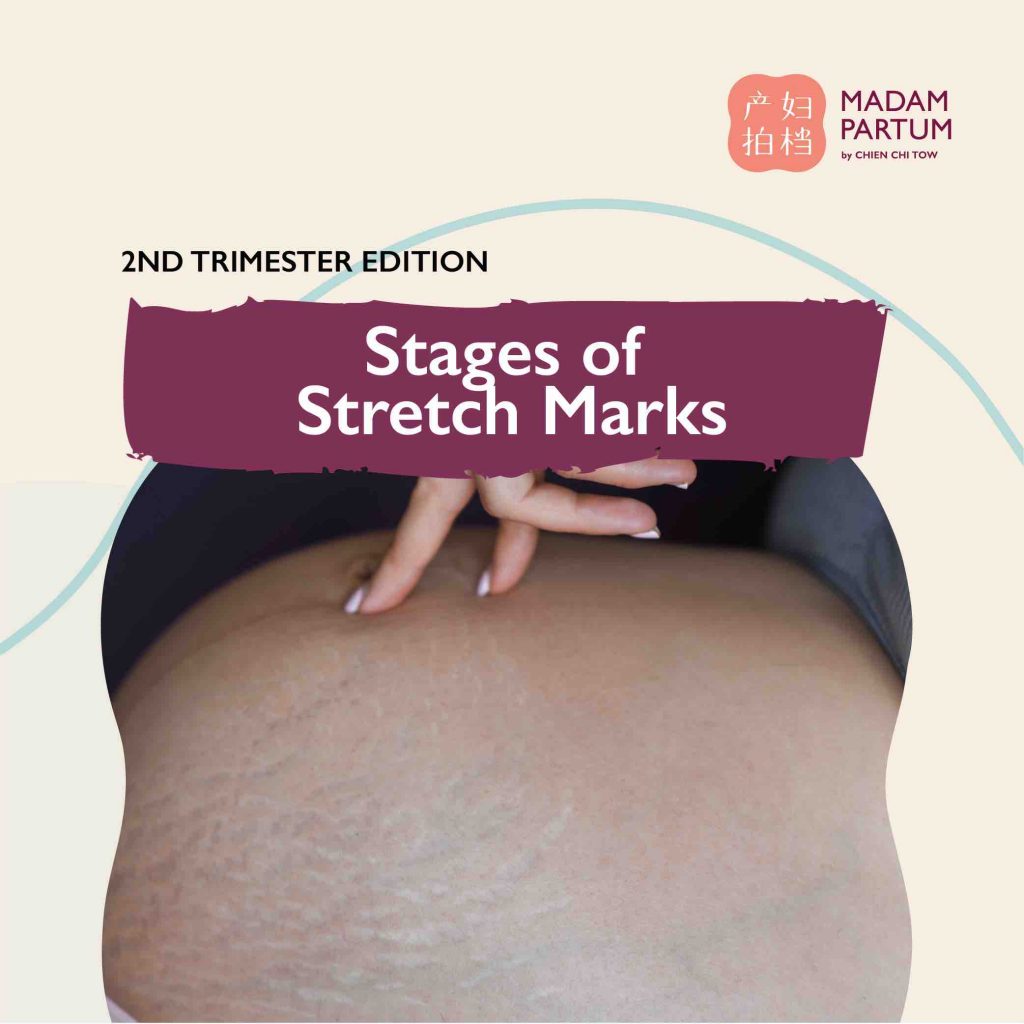
A mother’s stretch marks signifies how beautiful your body really is, a constant reminder and proof of the meaningful journey you’ve been through to give birth to your precious little one.
Do you know that stretch marks form in three different stages? And what can you do to reduce stretch mark appearance? Remember to continue following us for more tips.
You hear of how your friends complimented you on your pregnancy ‘glow’ and that could be attributed to your pregnancy hormones and increase in blood. During pregnancy, our body goes through an amazing phase of emotional and physical changes in order to gestate and grow your babies. Your skin and muscle will start to stretch to accommodate your growing baby and belly.
You may also experience stretch marks, as your abdomen and breasts grow. Stretch marks during pregnancy are usually found on the belly, breasts, thighs, and buttocks. They start out red, pink, or brown. Within a few months, they will fade to a light pink or silver. What week of pregnancy do stretch marks appear? Some women will start to get them in the second trimester, others might see them at around 30 weeks pregnant, and still others may not notice them until the last few weeks of the third trimester. Some women don’t get any at all.
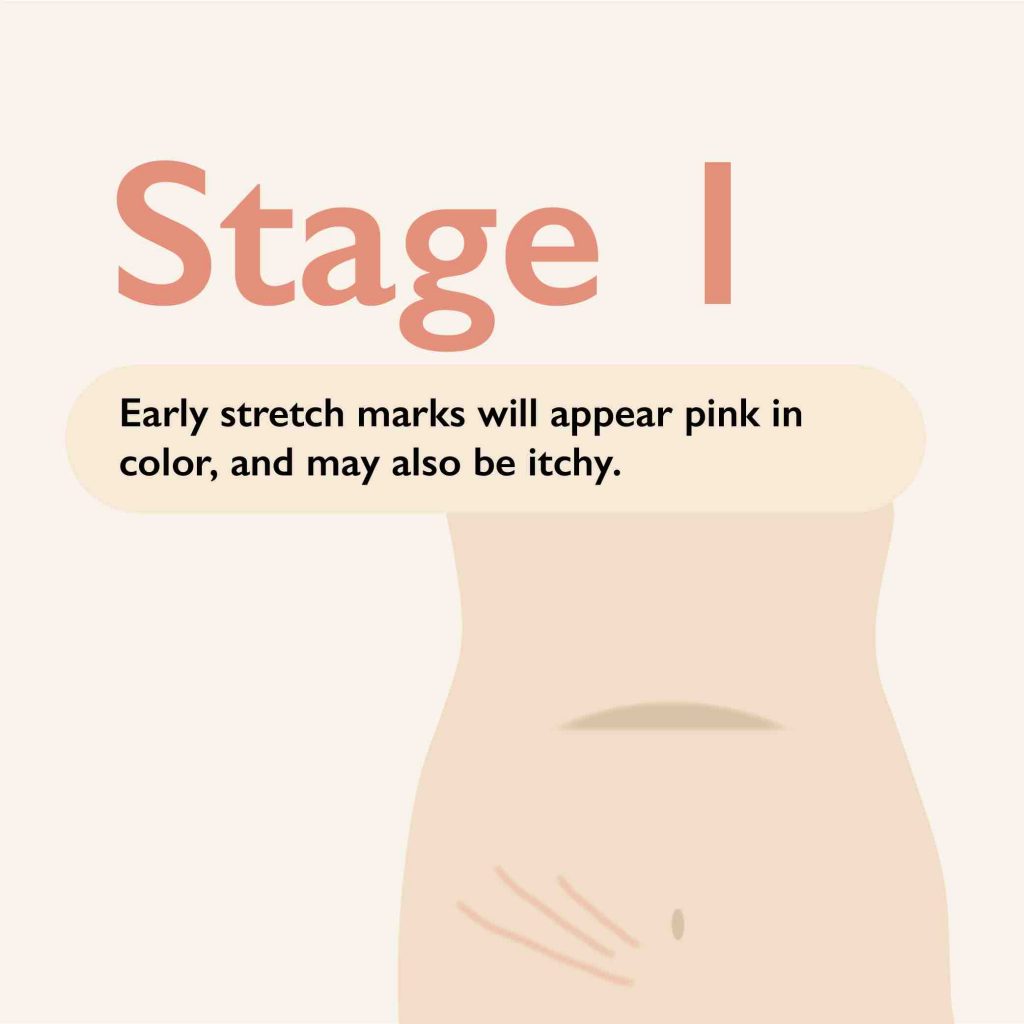
Early stretch marks will appear pink in color, and may also be itchy. The skin immediately around the stretch marks may also look ‘flattened’ and ‘thin’.
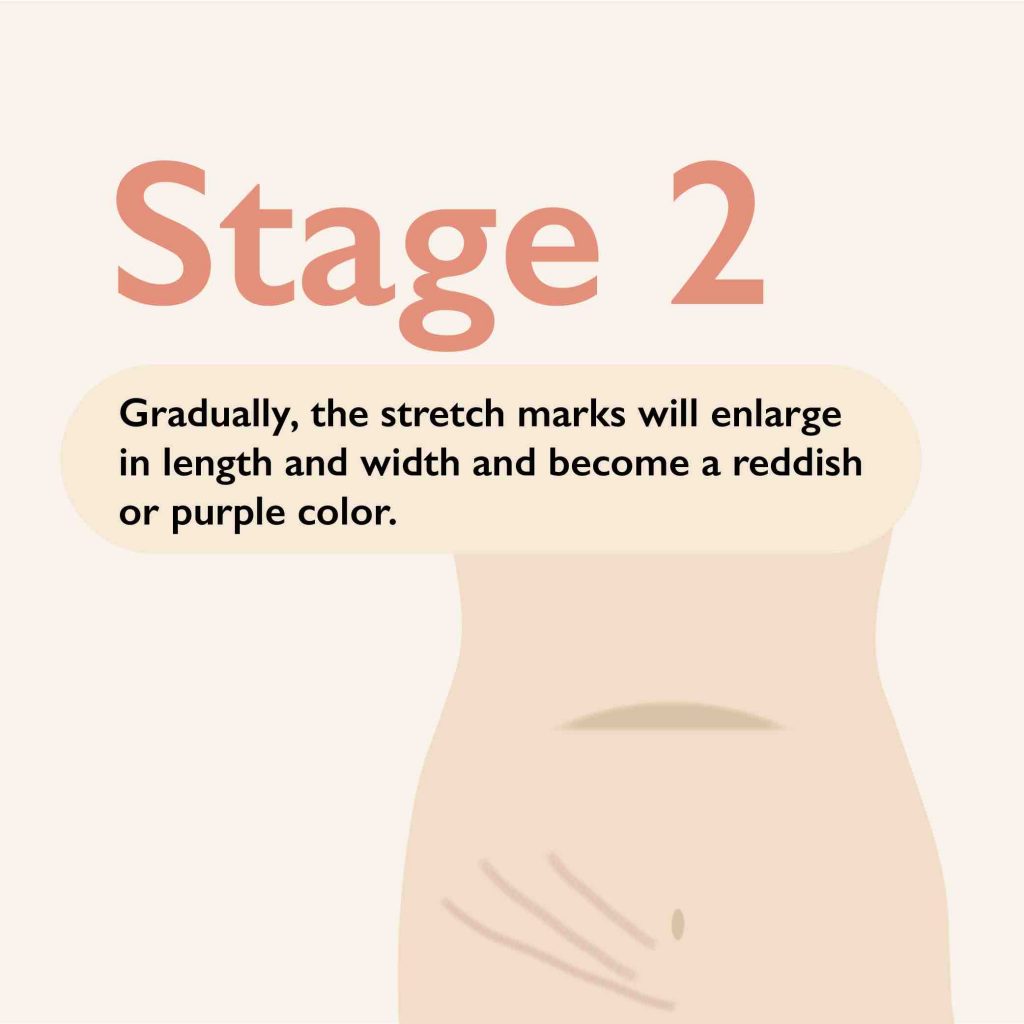
Gradually, the stretch marks will enlarge in length and width and become a reddish or purple color.
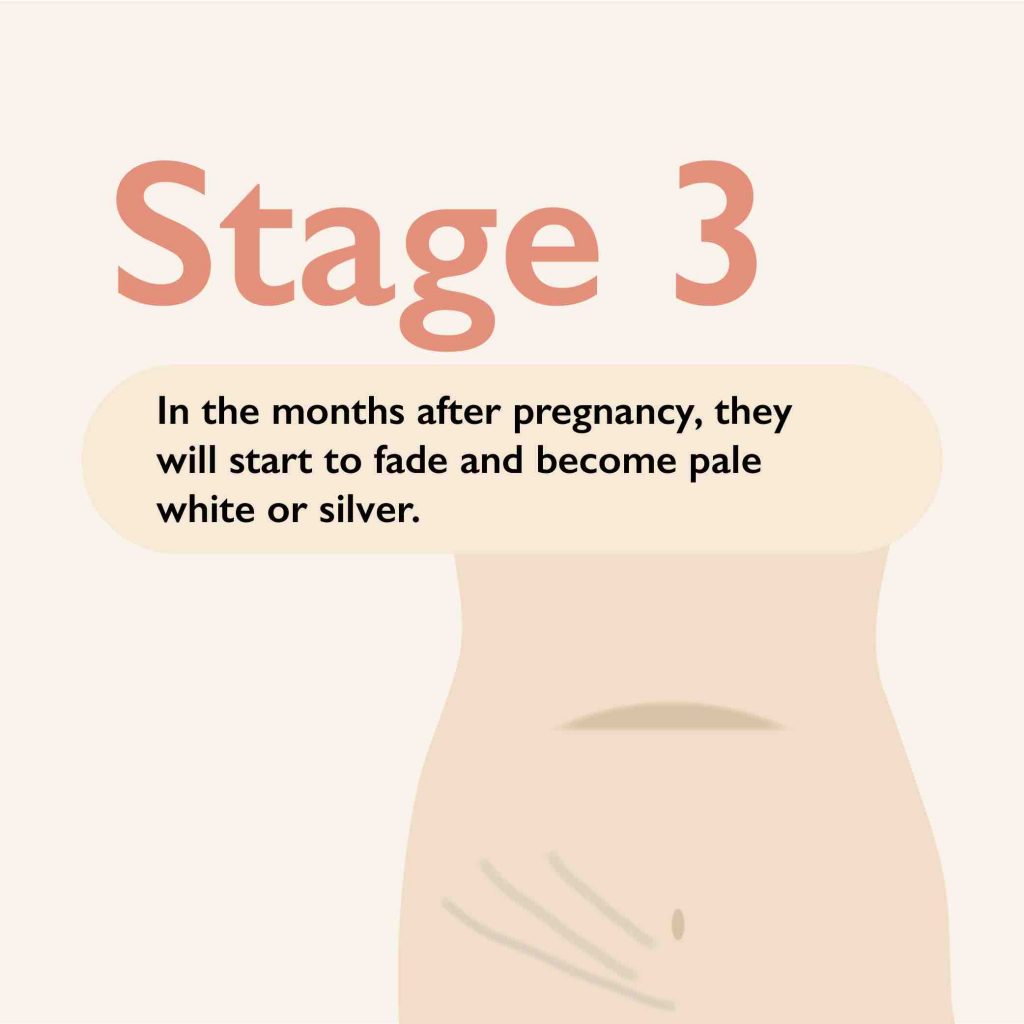
Once the stretch marks have matured, they lose their reddish/pink hue. In the months after pregnancy, they will start to fade and become pale white or silver. They may also appear slightly depressed and irregular in shape or length.
Most women develop stretch marks on their abdomen during pregnancy, however, it is also common to get them on the breasts, thighs, hips, lower back, and buttocks. While they can appear anywhere on the body, they are most likely to appear in places where large amounts of fat are stored.While it’s important to know why, how and where stretch marks form in pregnancy, even more, important is to know how to help prevent them from forming in the first place.
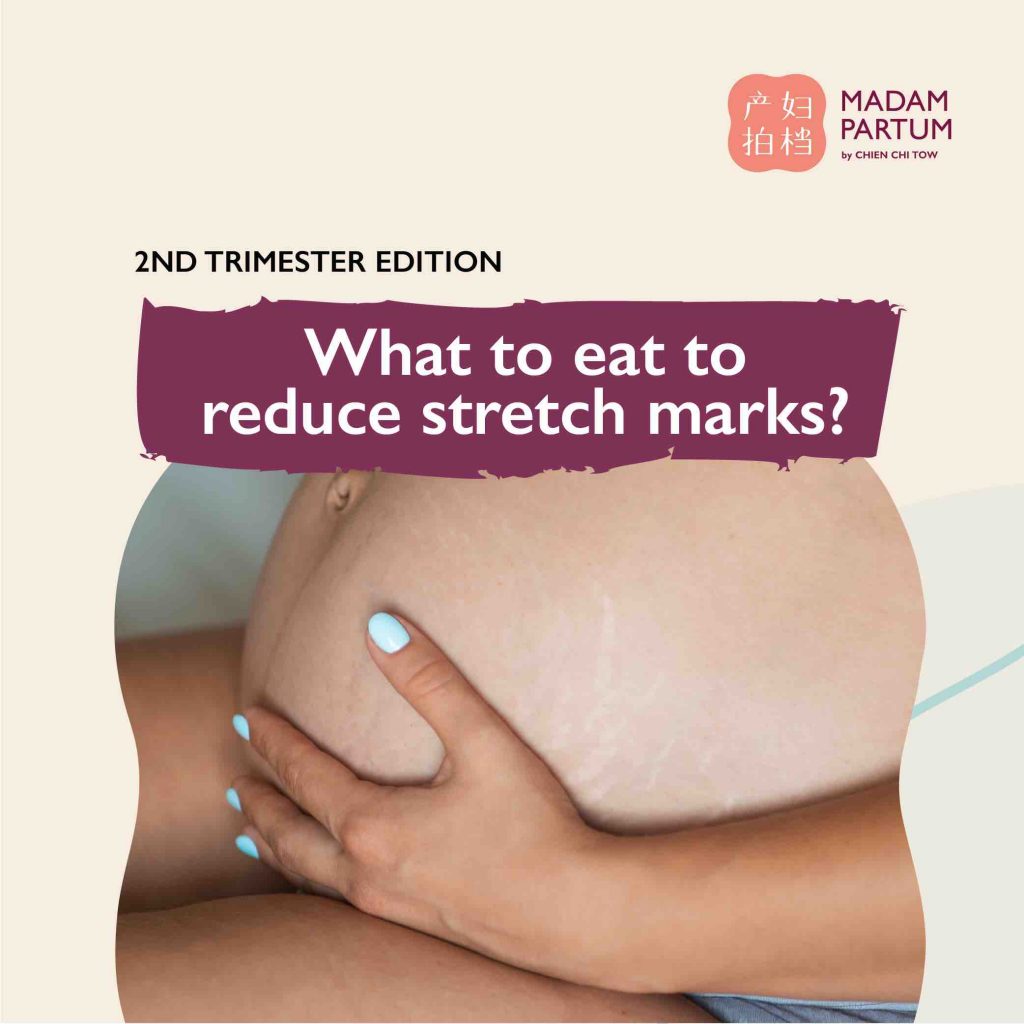
In TCM, we believe that food itself is medicine and can change the way our body works. Creating a diet or consciously seeking food that is beneficial to your body can help you in the long run. We all know one of the most important components of women’s skin is collagen.
Collagen and elastin fibers in the skin are necessary to keep rapidly growing skin taut. Eat foods that are rich in Vitamin E and C, zinc and silica, which help to form collagen. Vitamin C, in particular, is an important antioxidant that helps protect tissue from damage. Vitamins B2 (Riboflavin) and B3 (Niacin) are also said to help promote and maintain healthy skin.
Drinking sufficient water (approximately 2 litres a day) is essential in order to help strengthen and renew your skin.
Pre Partum Nourishing Collagen Soup helps in increasing the collagen intake which will be helpful in supporting mommies’ health during pregnancy and in her postpartum recuperation. When making this at home, boil it with bone to make a delicious bone broth collagen soup that is also good for general consumption for the family too!
Fish – are rich in collagen, especially the skin, as much of collagen are stored in the fish skin.
Citrus Fruits and Berries (like Oranges, Grapefruit) – Vitamin C plays a major role in the production of pro-collagen, the body’s factory to collagen. Therefore, getting enough vitamin C is critical.
Cashew Nuts – contain zinc and copper, both of which boost the body’s ability to create collagen.
In addition to boosting energy levels as shared in our earlier post and the many other benefits such as reducing mood swings, improving sleep patterns and enhancing one’s overall self-image, exercise can also help to prevent stretch marks. Exercise improves circulation, which keeps the skin elastic and more able to stretch as it grows.
Stretch marks can occur as your skin stretches due to rapid weight gain. A healthy range of weight gain would be between 11.5 – 16kg. If twins are expected, the recommended weight gain would be between 17 – 25kg. During your first prenatal check-up, have a discussion with your obstetrician & gynaecologist (O&G) about the amount of weight you should be gaining throughout your pregnancy.
In addition to ensuring that you keep your skin supple through eating the right foods and getting enough exercise, you should use a topically-applied stretch mark oil or cream that is specifically formulated to maximize the skin’s elasticity and minimize the occurrence of stretch marks.
Your skin may also feel extra dry and itchy. This can be normal. You cannot totally prevent stretch marks, but there are things you can do to minimise their appearance if they do form. A nutritious diet, drinking plenty of water, stretch mark control creams and skin firming oils, and managing your weight can help. However, see your doctor if you experience excessive itchiness in late pregnancy.

Experiences of labour and child birth can differ from mother to mother. Some experience almost

Life has its unexpected moments. In 2020, Covid took the world by storm and disrupted

They say that healthy Mommies make healthy babies. This is very true especially during pregnancy.